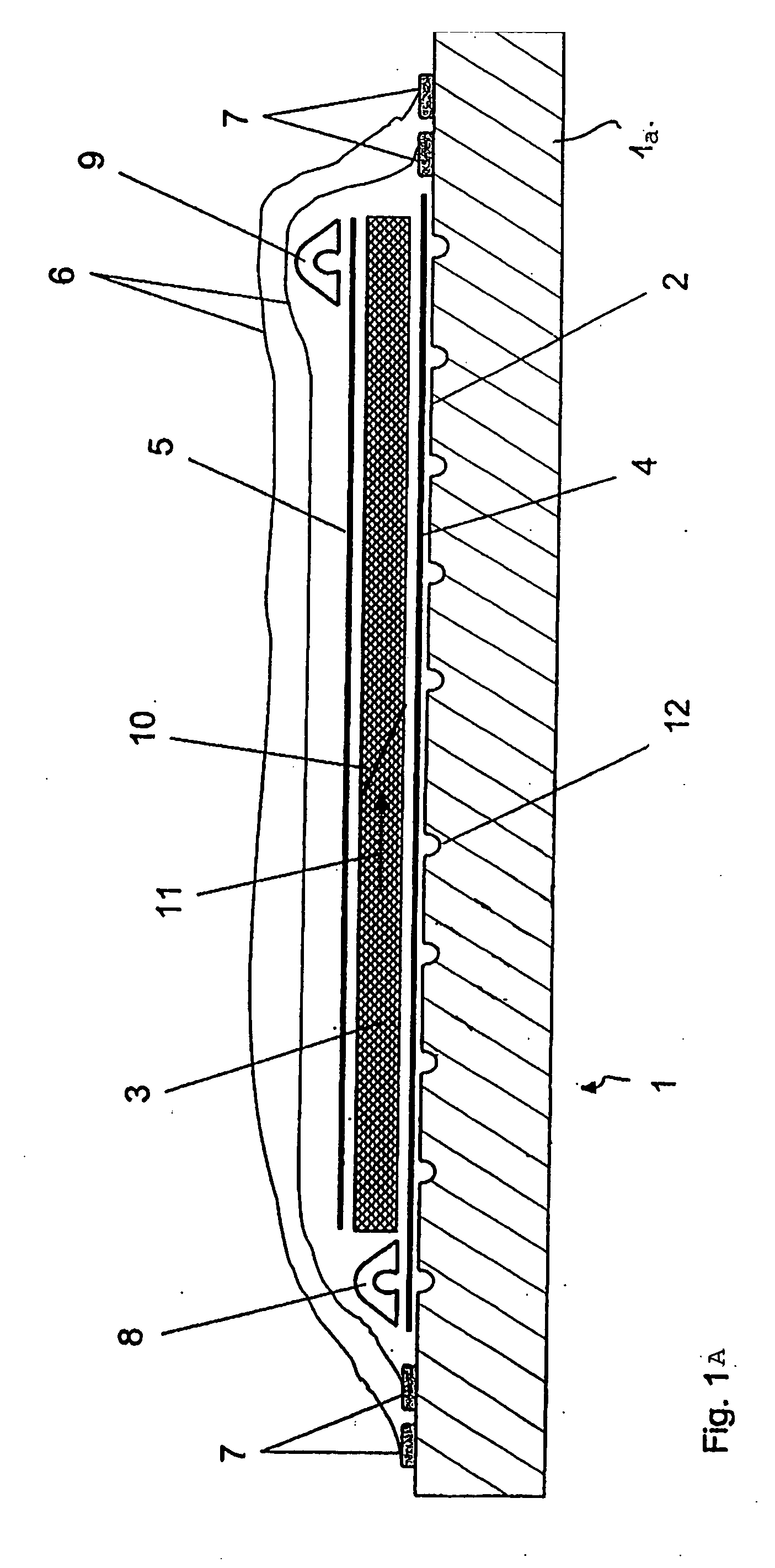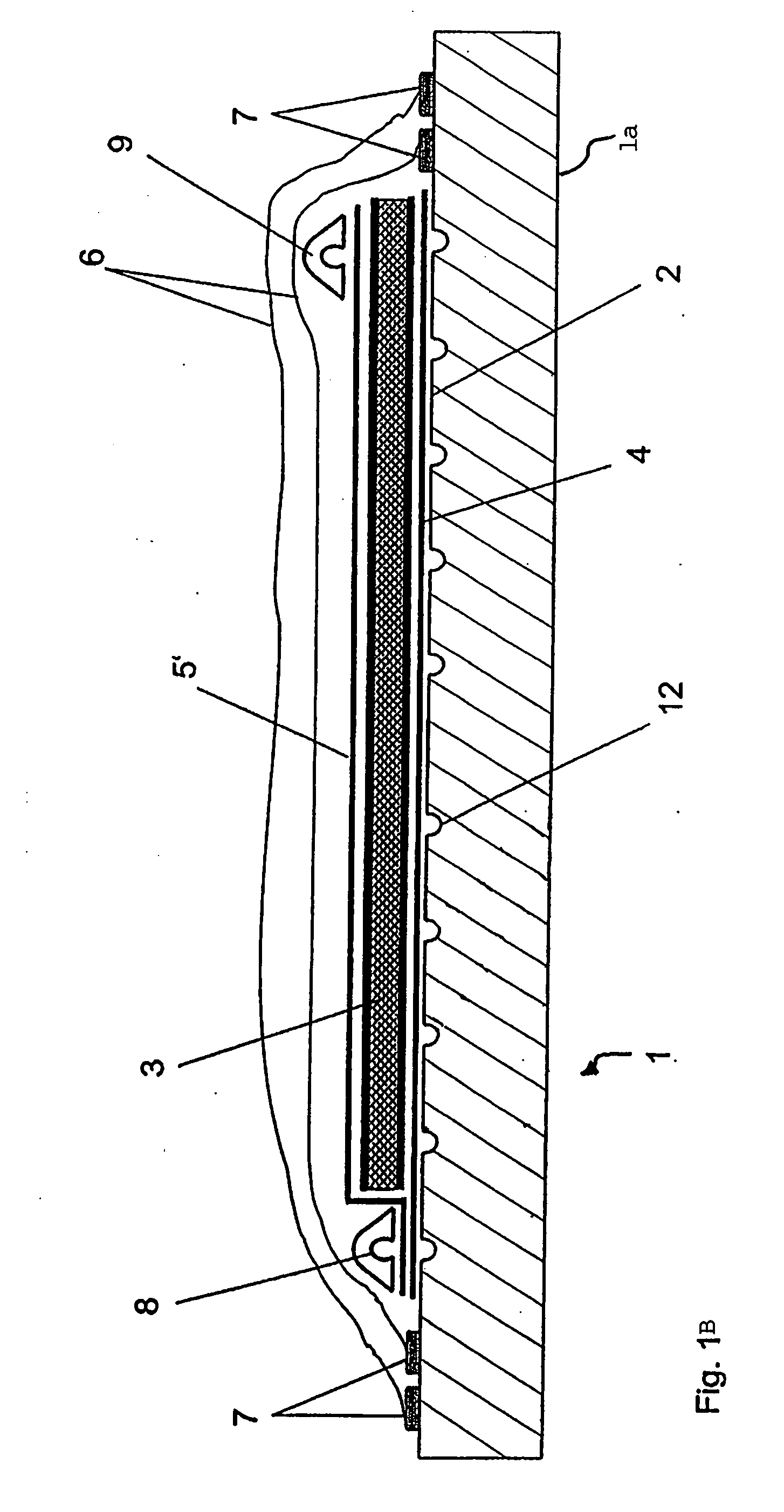Tool for the production of fiber composite components
a technology for fiber composite components and tools, applied in the field of tools for the production of fiber composite components, can solve the problems of inability to reuse flow promoters, increase production costs, adverse effects, etc., and achieve the effect of shortening the time and improving the impregnation
- Summary
- Abstract
- Description
- Claims
- Application Information
AI Technical Summary
Benefits of technology
Problems solved by technology
Method used
Image
Examples
Embodiment Construction
[0036]FIG. 1A shows a view of a section through a tool 1 with a placed-in semifinished fiber product 3 according to an exemplary embodiment of the invention.
[0037]The tool 1 has a table 1a with a surface 2, the form of which defines the form of the components to be produced. The table 1a preferably consists of metal, but may also consist of plastics, ceramics or other suitable materials.
[0038]On the surface 2, the semifinished fiber product 3 is arranged. The semifinished fiber product 3 may be, for example, a laid, woven or knitted fabric, a nonwoven fabric, loose fibers or a sandwich-like structure. The thickness of the semifinished fiber product 3 may also vary over the surface 2.
[0039]A peel ply and / or a release film 4 is / are typically arranged between the surface 2 and the semifinished fiber product 3. In the same way, such a release film and / or peel ply 5 may also be arranged on the semifinished fiber product 3.
[0040]The entire construction is packed in an airtight manner by m...
PUM
| Property | Measurement | Unit |
|---|---|---|
| Angle | aaaaa | aaaaa |
| Width | aaaaa | aaaaa |
| Width | aaaaa | aaaaa |
Abstract
Description
Claims
Application Information
 Login to View More
Login to View More - R&D
- Intellectual Property
- Life Sciences
- Materials
- Tech Scout
- Unparalleled Data Quality
- Higher Quality Content
- 60% Fewer Hallucinations
Browse by: Latest US Patents, China's latest patents, Technical Efficacy Thesaurus, Application Domain, Technology Topic, Popular Technical Reports.
© 2025 PatSnap. All rights reserved.Legal|Privacy policy|Modern Slavery Act Transparency Statement|Sitemap|About US| Contact US: help@patsnap.com



